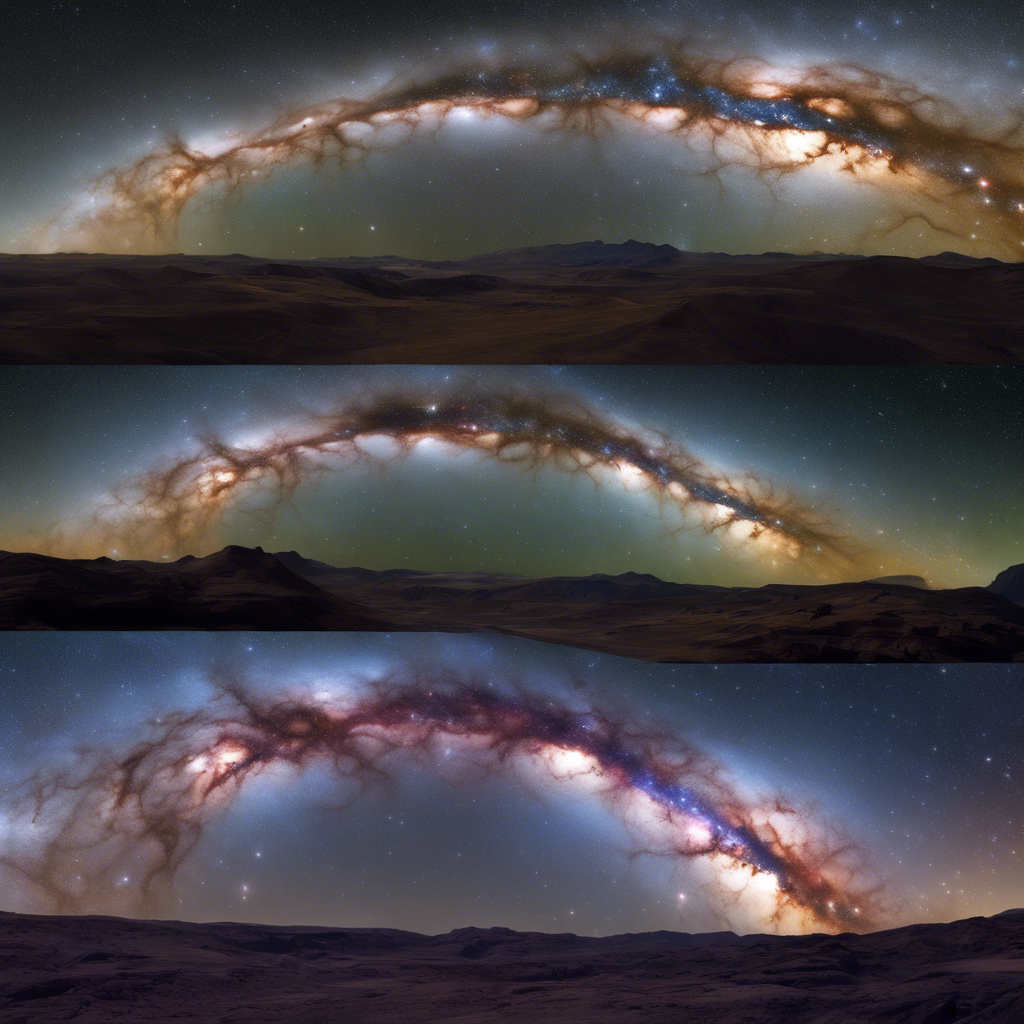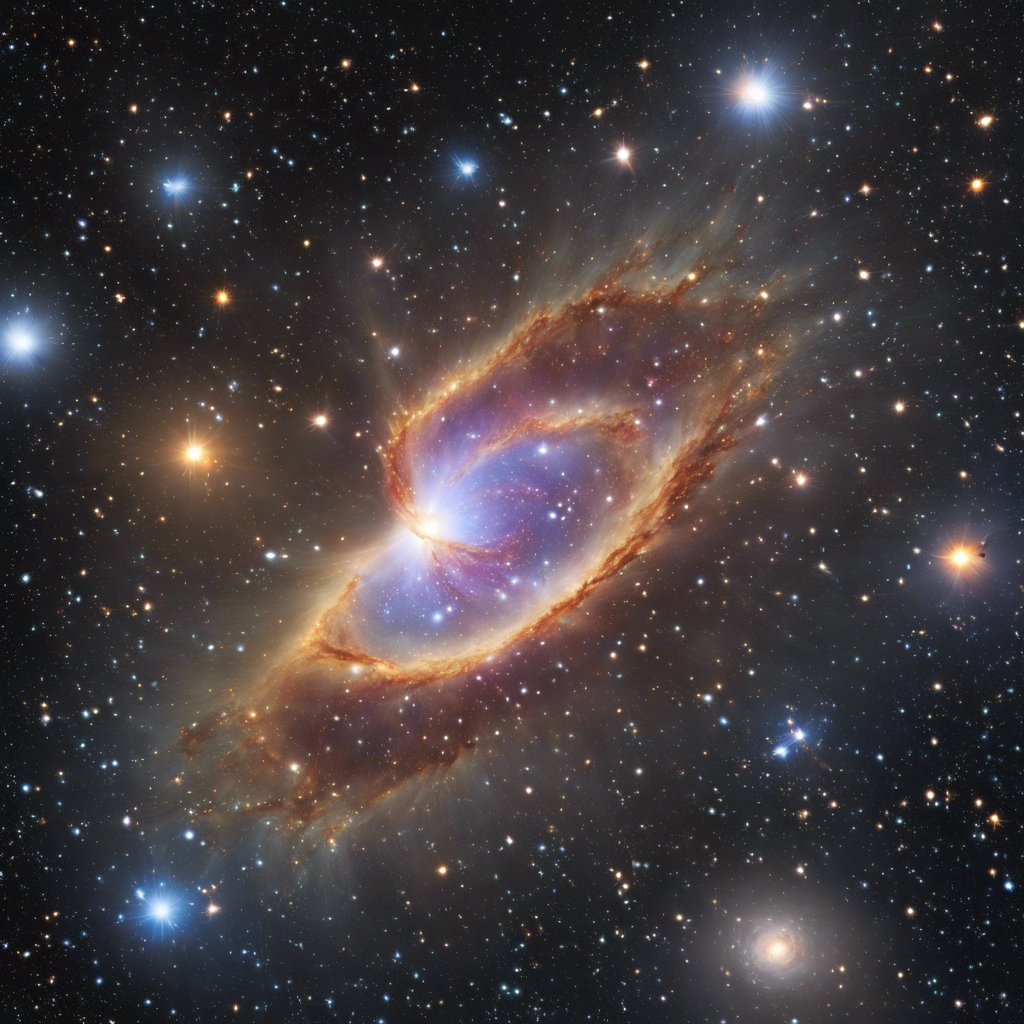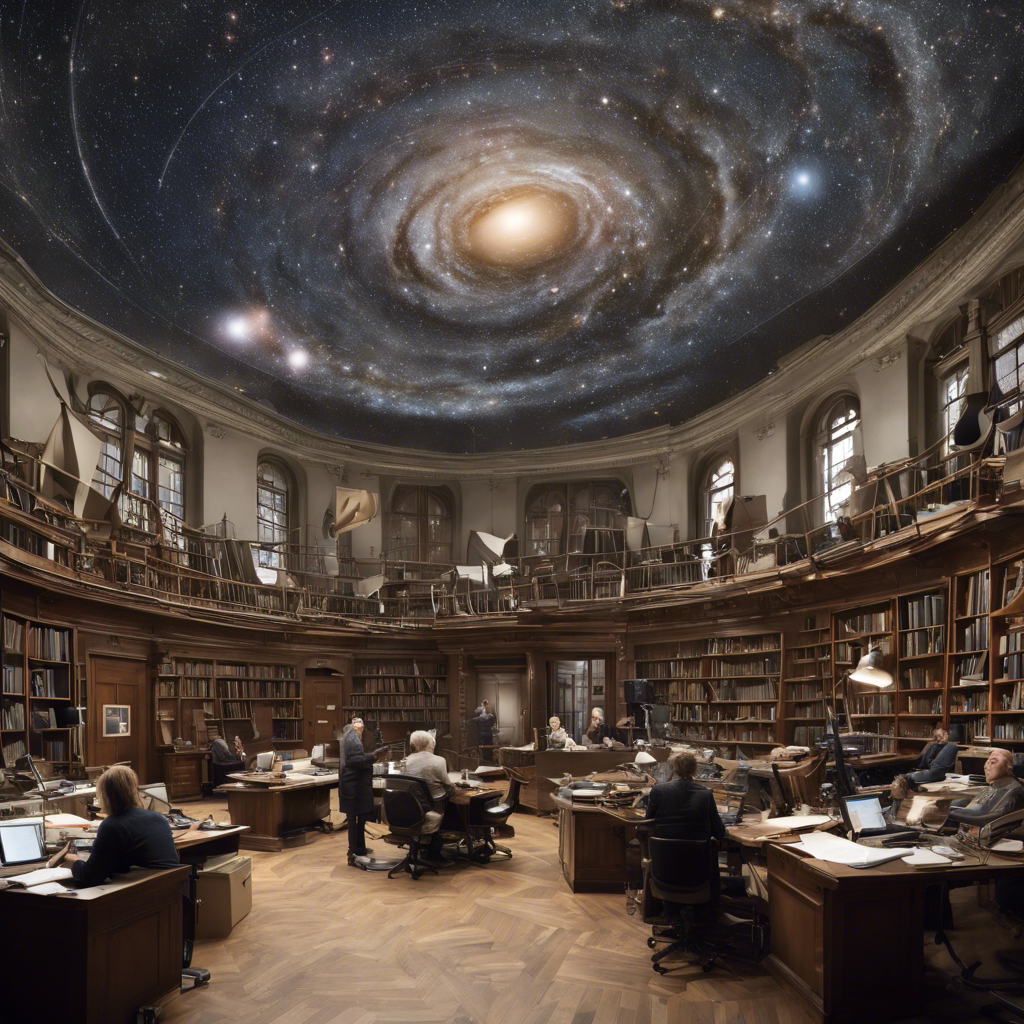Astronomers utilize simulations and archival data to uncover evidence of a colossal bow shock caused by the Large Magellanic Cloud’s collision with the Milky Way’s halo.
In the vast expanse of the Milky Way’s outskirts, astronomers have discovered a hidden spectacle that has remained invisible except in a handful of wavelengths. Through new simulations and a reexamination of archival data, scientists have unveiled the presence of a massive bow shock, extending across 100,000 light-years. This phenomenon is caused by the collision of the Large Magellanic Cloud (LMC), the largest satellite of the Milky Way, with the surrounding hot, sparse gas. The findings shed light on the behavior of the gas surrounding our galaxy and provide valuable insights into the dynamics and evolution of galactic systems.
The Sonic Boom in Space
To understand the concept of a bow shock in space, one can draw a parallel with the sonic boom created by a fighter jet surpassing the speed of sound. When an aircraft breaks the sound barrier, it generates a shock wave that trails behind it, causing a sudden change in pressure known as a sonic boom. Similarly, the LMC, hurtling towards the Milky Way, is moving faster than the local speed of sound within the sparse gas that surrounds it. This creates a bow shock as the LMC crashes through the medium at nearly twice the speed of sound.
Simulating the Wind Tunnel
David Setton and his team from Princeton University simulated a “wind tunnel” to predict the size and shape of the bow shock created by the LMC’s infall. In the computer simulation, the LMC is represented as a bundle of gas and stars at rest within a box. The sparse gas surrounding the Milky Way acts as a headwind, rushing towards and around the LMC. While the stars within the LMC remain unaffected, the gas pushes into the wind, generating a bow shock that extends three times the size of the dwarf galaxy.
Mapping the Bow Shock
Equipped with the knowledge of what to look for and where, Setton and his colleagues analyzed recent measurements taken by the Wisconsin H-alpha Mapper (WHAM). WHAM maps the presence of hot gas through hydrogen-alpha emission. By projecting WHAM data onto their shock simulation, the researchers found a good alignment, although not perfect. The color map of gas density resulting from the simulation matched the asymmetry expected from the LMC’s bow shock. However, further observations and quantitative comparisons are needed to confirm the presence of the bow shock definitively.
Unveiling the Secrets of Galactic Gas
Studying the bow shock caused by the LMC’s collision with the Milky Way’s halo provides astronomers with valuable insights into the behavior of the gas surrounding our galaxy. Despite its sparsity, this gas acts as a reservoir for future star formation in the disk. It also serves as the dumping ground for gas fountains ejected by supernovae, contributing to its continuous evolution. The interaction between gas-rich dwarf galaxies like the LMC and the Milky Way’s gas reservoir affects the temperature and cooling processes of the gas, potentially influencing star formation in the spiral disk.
The LMC and SMC: An Astrophysical Laboratory
The proximity of the LMC and its smaller companion, the Small Magellanic Cloud (SMC), to the Milky Way makes them an ideal laboratory for studying galactic dynamics and evolution. These dwarf galaxies provide insights into the role of dark matter, star formation, and stellar feedback in these processes. Gurtina Besla from the University of Arizona describes the LMC and SMC as “awe-inspiring” objects that have fascinated humans since the dawn of stargazing. Understanding the dynamics of this galactic pair is crucial for unraveling the mysteries of the universe.
Conclusion:
The discovery of a massive bow shock caused by the collision of the Large Magellanic Cloud with the Milky Way’s halo opens up new avenues for understanding the behavior of galactic gas and the evolution of galactic systems. The simulations and analysis conducted by astronomers provide a glimpse into the complex dynamics of these celestial objects. As further studies and observations are conducted, scientists hope to gain a deeper understanding of the role of gas in star formation and the overall evolution of galaxies. The LMC and its collision with the Milky Way serve as a captivating spectacle in the cosmic theater, inviting us to explore the wonders of the universe.











